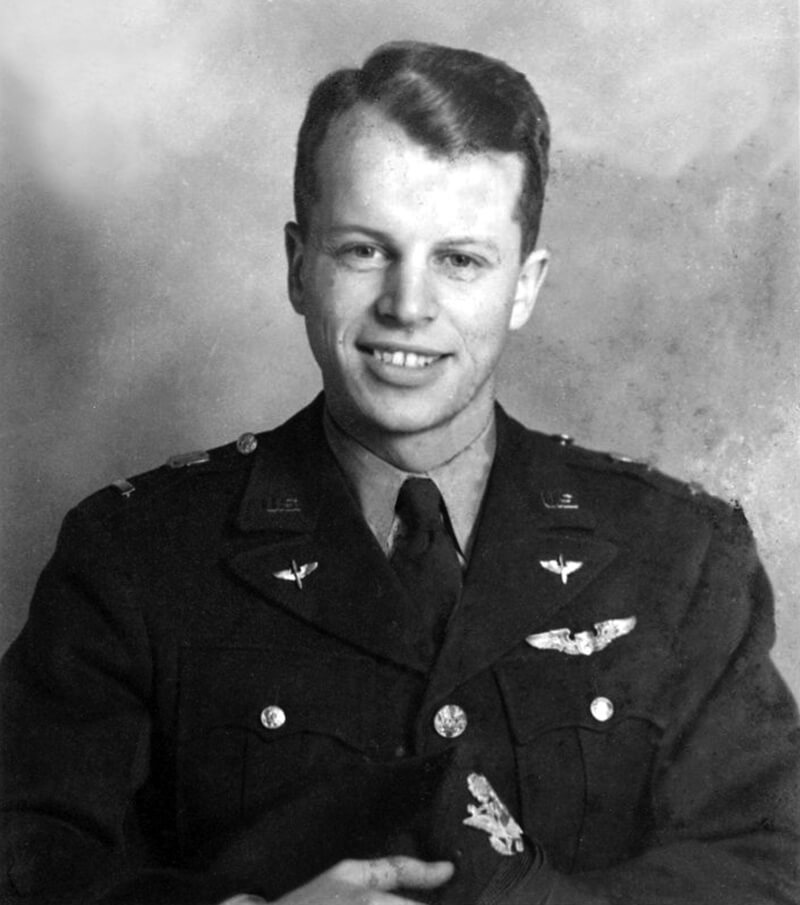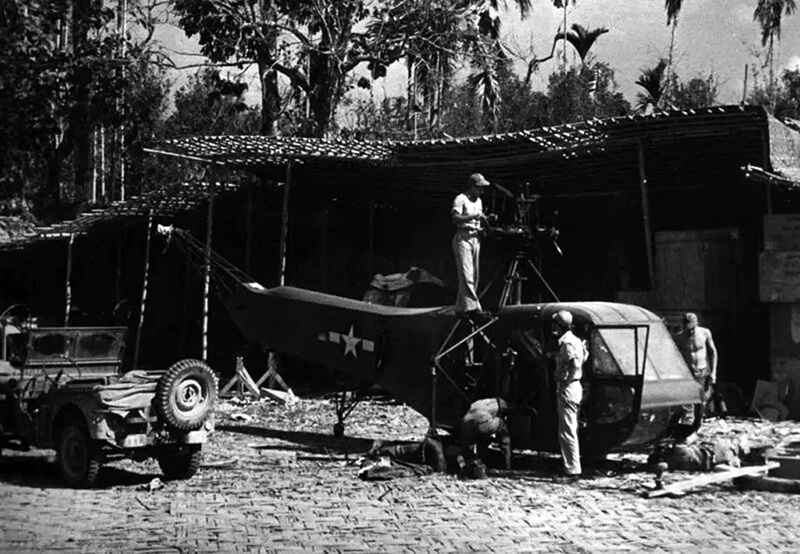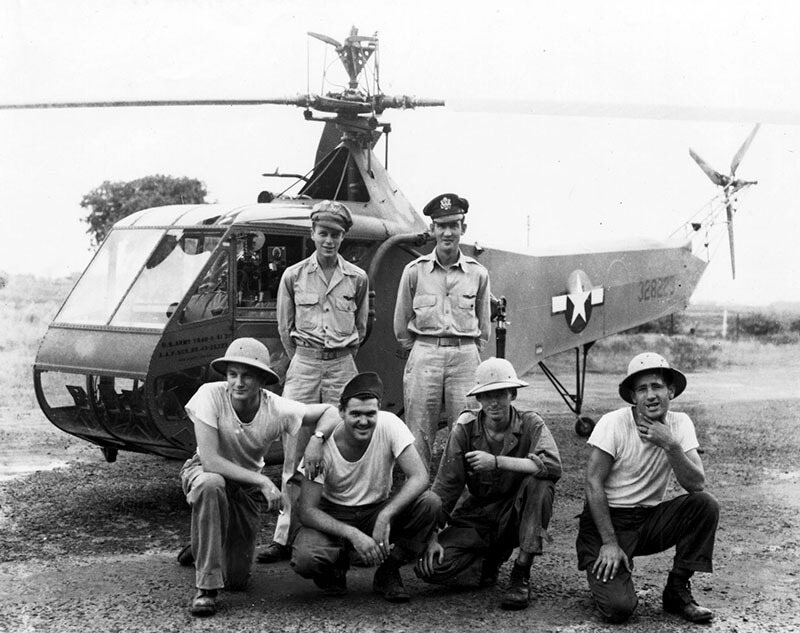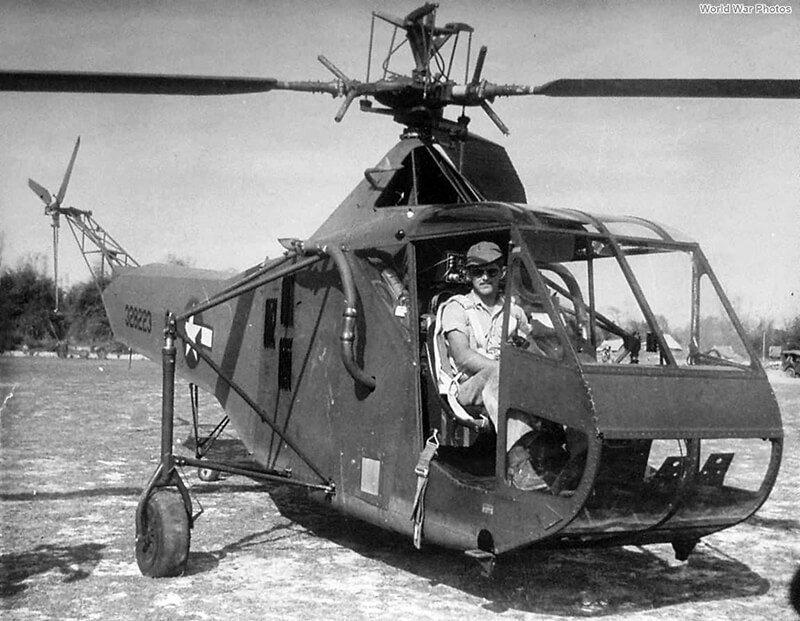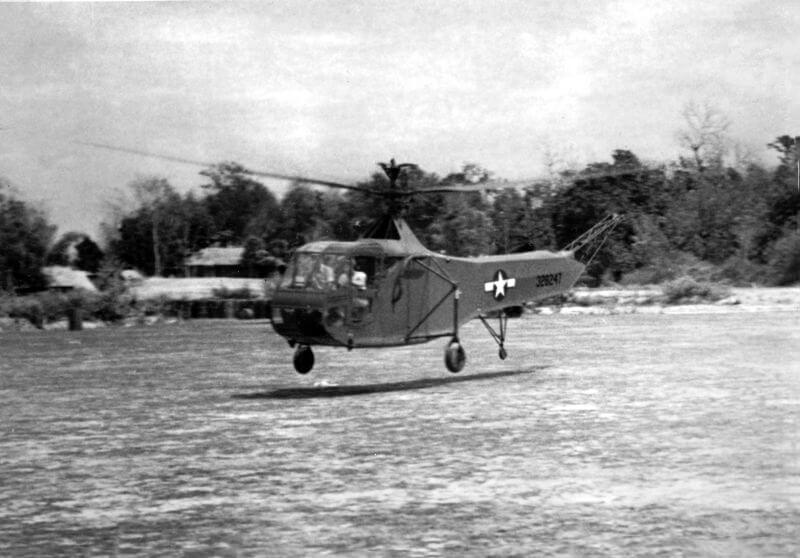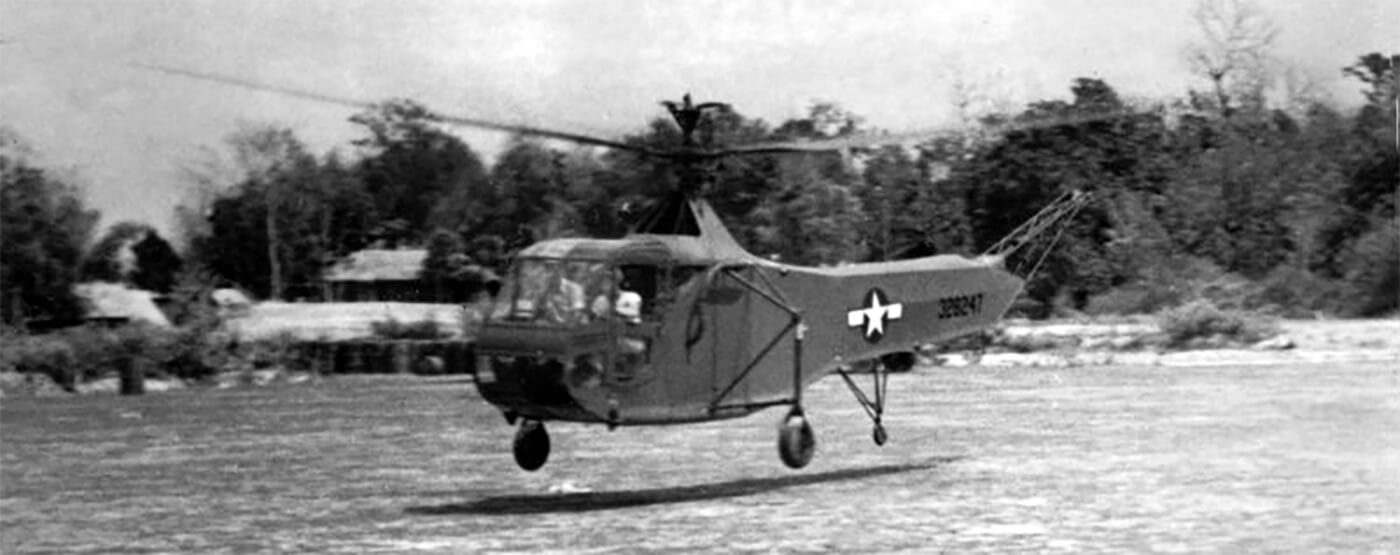| Page Created |
| March 12th, 2023 |
| Last Updated |
| March 13th, 2023 |
| Country |
  |
| Special Forces |
| 1st Air Commando Group Chindits |
| April 21st, 1944 – April 26th, 1944 |
| Search and Rescue Operation |
| Objectives |
- Rescue Pilot Technical Sergeant Ed “Murphy” Hladovcak and three Chindits after crashing Stinson L-1A Vigilant liaison aircraft behind enemy lines.
| Operational Area |
Burma
| Unit Force |
- 1st Air Commando Group
- L1 Vigilant
- L5 Sentinel
- Sikorsky YR-4B 43-28223
- Chindits
| Opposing Forces |
- Japanese 18th Division
| Operation |
| April 21st, 1944 – April 23rd, 1944 |
While carrying three injured British soldiers, Technical Sergeant Ed “Murphy” Hladovcak, who is piloting a Stinson L-1A Vigilant liaison aircraft, crashes in the jungle behind Japanese lines. Despite being a sturdy aircraft used for missions behind Japanese lines, the plane’s fixed landing gear breaks off when it hits an embankment upon landing in a rice paddy.
After the crash, “Murphy” Hladovcak and three British soldiers make their way through the thick jungle foliage until they are five hundred metres away from the wreck. They watch in hiding as Japanese soldiers search the wreckage, secure the crash site, and scout the area. As the day wore on and the heat intensified, the Japanese patrol come closer, and their leggings can be seen through the undergrowth.
Later that day, an L-5 Sentinel liaison plane from the 1st Air Commando Group flies overhead and drops a note, advising Murphy and the Brits to move up the mountain as the Japanese are nearby. Murphy has previously picked up three Japanese ceremonial swords as souvenirs from a battlefield, which are now in the cargo pit of the crashed L-1. If the Japanese find these swords and capture Hladovcak, he would be in serious danger.
That very same day Colonel Cochran gives Lieutenant Carter Harman radio orders, to fly a helicopter from Lalaghat Airfield, central India to Taro in northern Burma. It is a challenging task since Taro is 965 kilometres from Lalaghat, is well beyond the typical range of the YR-4B helicopter.
To prepare for the long journey, Harman ads four jerry cans of extra fuel to the unused co-pilot’s seat, as there are no available crew members in India or Burma to serve as a co-pilot. Besides that, another crew member’s weight would not help. Harman put the litter stretcher behind the seats and then takes off for the first leg of the flight to Taro. He has to navigate above mountain peaks that rise to 1,5 kilometres which is the theoretical ceiling of the YR-4B helicopter. He lands safely at Dimapur, refuels from his own jerry cans, and begins the second leg of the trip to Jorhat, a bomber base where B-24 Liberators are flying from.
| April 24th, 1944 |
Harman is comfortable flying alone, and it takes him about 24 hours to reach Taro. Here he takes a break and washes his clothes in a mountain stream. While at Taro, mechanics borrow him an extra fuel tank from an L5 and install it inside the fuselage of the helicopter. Unknown to Harman, L5’s are already pinpointing Hladovcak’s location on the ground, and the Air Commandos plan is to use the YR-4B helicopter and Harman for the rescue mission.
A radio message at Taro is received from Aberdeen, a temporary airstrip deep in Japanese territory. The message requests to send the eggbeater immediately. The YR-4B helicopter, is to proceed from Taro to Aberdeen Airstrip, located two hundred kilometres south, again beyond the YR-4B’s limited range. Aberdeen Airstrip is the home of L1 Vigilant and L5 Sentinel liaison airplanes who are used for air rescues and resupply missions. The survivors who arrive at Aberdeen via the L1’s or L5’s are transferred to larger aircraft for evacuation to India, all while being done under the noses of the Japanese.
Meanwhile in the jungle Murphy’s mind was racing with thoughts of being captured by the Japanese, as the three injured British soldiers are getting worse with infected wounds, the heat refuses to subside, and insects, particularly mosquitoes, which carry a virulent strain of malaria, are everywhere. Despite the sounds of gunfire cracking in the air, the Japanese do not appear.
| April 25th, 1944 |
During the morning Lieutenant Harman lands the YR-4B at the Aberdeen Air Commando base. He is informed that the four stranded men, are still holding out and have not been discovered by the Japanese. L5 Sentinels are delivering supplies and messages to Hladovcak, but the white parachute he has hung across the rice paddy to mark his location could make him an easy target for the enemy.
That same morning Murphy receives a message from an L5 informing him of a location where Hladovcak and the three wounded British soldiers could be retrieved from. The location is a sandbar along a nearby river, where British Chindits have secured a small area for an L1 or L5 to land. The Air Commandos at Aberdeen know that the four men are unable to make it to the riverbank on their own but believe that Harman can help them bridge the gap.
Harman is concerned about the reliability of the 200 hp Warner piston engine that powers his YR-4B helicopter. He is uncertain if he could reach the clearing where the stranded men were waiting, as the YR-4B was susceptible to gunfire and could only carry one passenger at a time.
Nonetheless Harman flies the helicopter from Aberdeen Airstrip to the sandbar riverbank, where he meets with an L5 Sentinel. The L5 guides Harman to the clearing where Hladovcak and the three British soldiers are hiding. Hladovcak is thrilled to see the “eggbeater” arriving as he has never seen a helicopter before. After Harman lands in the clearing amidst a flurry of flying dust and debris, Murphy loads the most severely wounded British Chindit onto the YR-4B. The helicopter struggles and vibrates but eventually takes off. The helicopter manages to reach the sandbar where a liaison plane carries the British soldier to safety.
During the second flight, Lieutenant Harman, while hauling out a second British soldier, the Warner engine suddenly seizes. After a clunking sound with vapor around the engine due to overheating, the helicopter is unable to start. This means that Harman must spend the night on the sandbar.
| April 26th, 1944 |
Despite the warnings from liaison pilots about potential weather problems the next day, Harman manages to get the engine started in the morning and rescues the third British soldier. Sergeant Hladovcak is now the only one left in the jungle. He manages to hold out until Harman flies in again, but as the YR-4B helicopter approaches, soldiers emerge from the treeline with rifles raised. With, Hladovcak shouting about the Japanese troops closing in on him, Harman is able to lift off with him on board. As they ascend, the soldiers swarm directly beneath them, causing the helicopter to sink towards the jungle, but Harman managed to get it to full power and they escape from the armed men.
Harman takes Hladovcak all the way back to Aberdeen, where they find out that the soldiers who had swarmed beneath the helicopter were friendly Chindits who had come to the rescue of Hladovcak.
For his actions during this rescue, Lieutenant Carter Harman is awarded the Distinguished Flying Cross.
| Multimedia |
